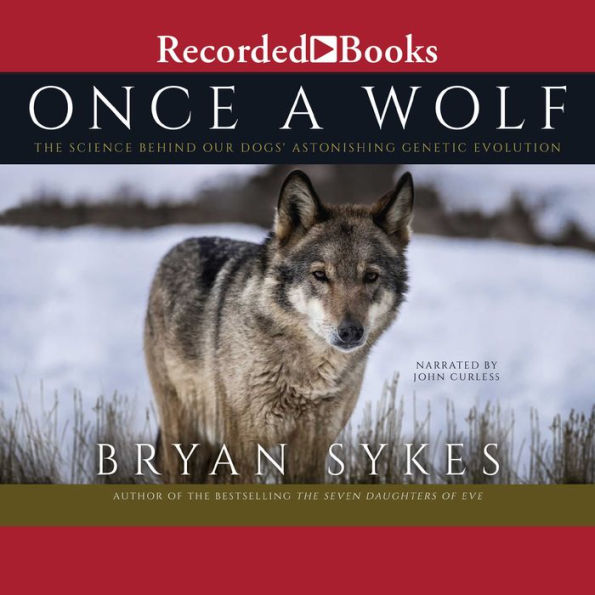"In prose both scientific and poetic, geneticist and author (DNA USA, 2012) Sykes, self-described as "not a dog person" but curious about the parallel evolution of dog and human, takes us through the archaeological, paleontological, behavioral, and genetic evidence pinpointing the transformation of wolf to dog. . . Woven throughout are possible answers to why humans are so in love with their dogs, making for a warmly engaging popular-science read."
The author of Seven Daughters of Eve returns with a lively account of how all dogs are descended from a mere handful of wolves. How did wolves evolve into dogs? When did this happen, and what role did humans play? Oxford geneticist Bryan Sykes used the full array of modern technology to explore the canine genetic journey that likely began when a human child decided to adopt a wolf cub thousands of years ago. In the process, he discovered that only a handful of genes have created the huge range of shapes, sizes, and colors in modern dogs. Providing scientific insight into these adaptive stages, Sykes focuses attention on our own species, and how our own evolution from (perhaps equally aggressive) primates was enhanced by this most unlikely ally. Whether examining our obsession with canine purity, or delving into the prehistoric past to answer the most fundamental question of all, "Why do we love our dog so much?," Once a Wolf is an engaging work no dog lover or ancestry aficionado should be without
1128959760
Once a Wolf: The Science Behind Our Dogs' Astonishing Genetic Evolution
The author of Seven Daughters of Eve returns with a lively account of how all dogs are descended from a mere handful of wolves. How did wolves evolve into dogs? When did this happen, and what role did humans play? Oxford geneticist Bryan Sykes used the full array of modern technology to explore the canine genetic journey that likely began when a human child decided to adopt a wolf cub thousands of years ago. In the process, he discovered that only a handful of genes have created the huge range of shapes, sizes, and colors in modern dogs. Providing scientific insight into these adaptive stages, Sykes focuses attention on our own species, and how our own evolution from (perhaps equally aggressive) primates was enhanced by this most unlikely ally. Whether examining our obsession with canine purity, or delving into the prehistoric past to answer the most fundamental question of all, "Why do we love our dog so much?," Once a Wolf is an engaging work no dog lover or ancestry aficionado should be without
19.99
In Stock
5
1

Once a Wolf: The Science Behind Our Dogs' Astonishing Genetic Evolution

Once a Wolf: The Science Behind Our Dogs' Astonishing Genetic Evolution
FREE
with a B&N Audiobooks Subscription
Or Pay
$19.99
19.99
In Stock

Editorial Reviews
Product Details
| BN ID: | 2940170762903 |
|---|---|
| Publisher: | Recorded Books, LLC |
| Publication date: | 03/26/2019 |
| Edition description: | Unabridged |
Videos

From the B&N Reads Blog
